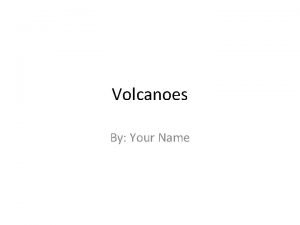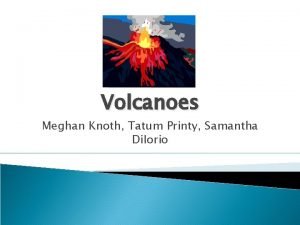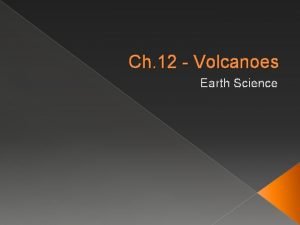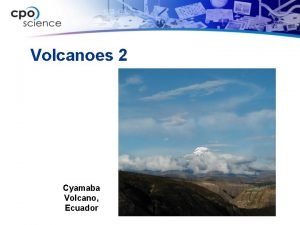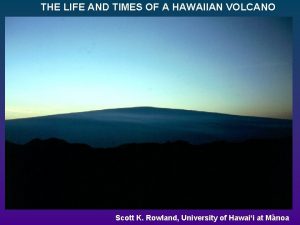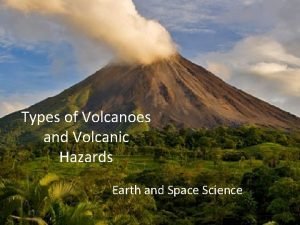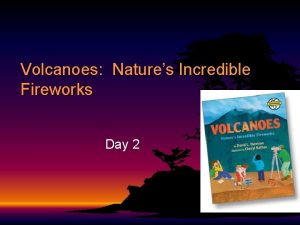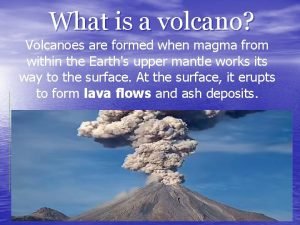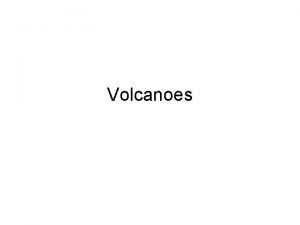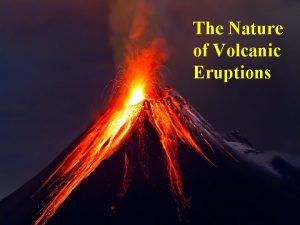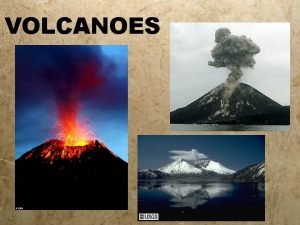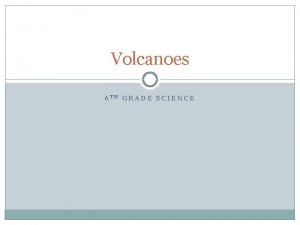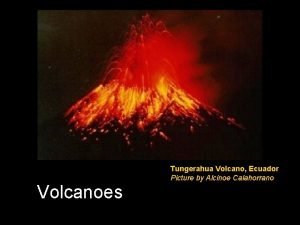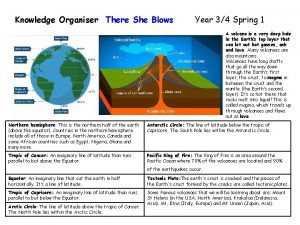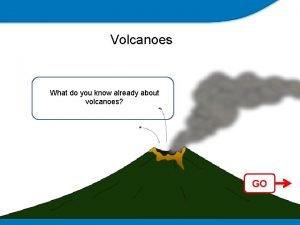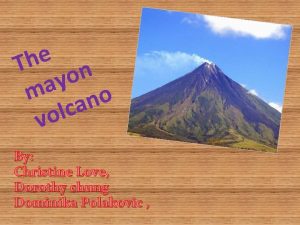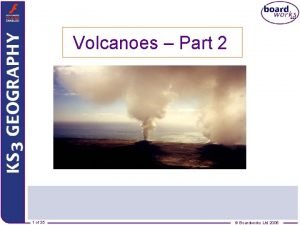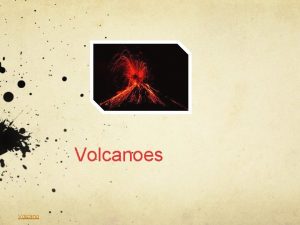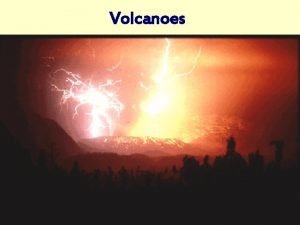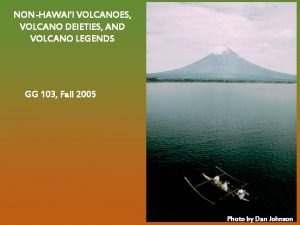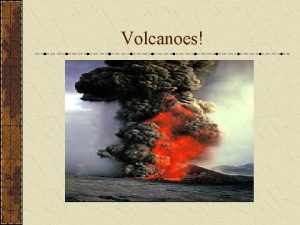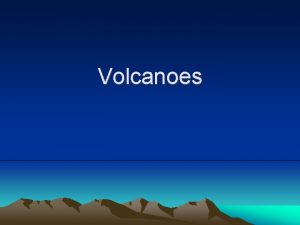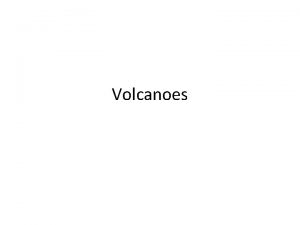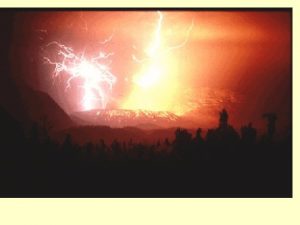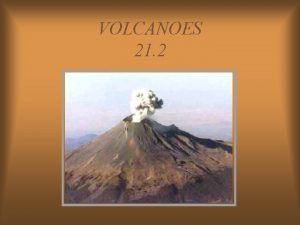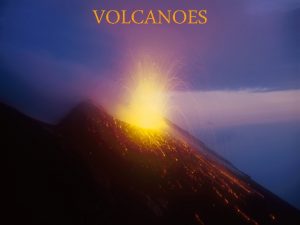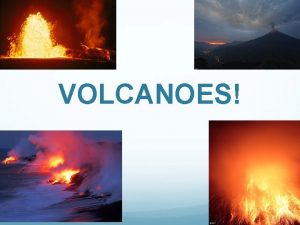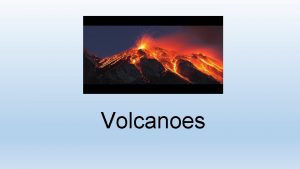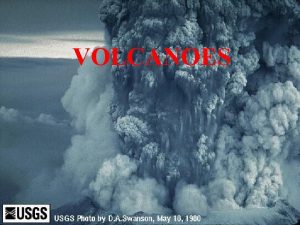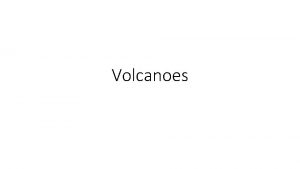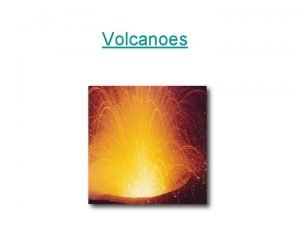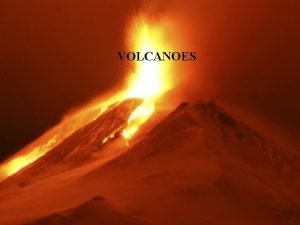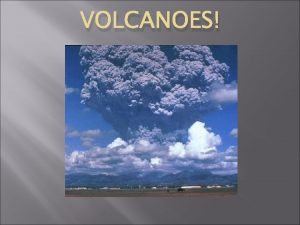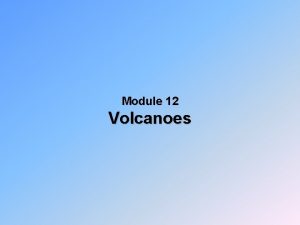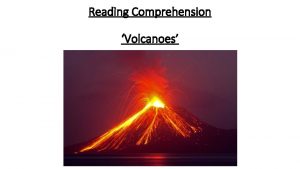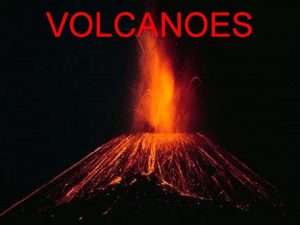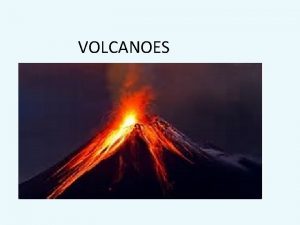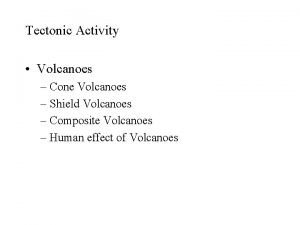VOLCANOES What is a volcano A volcano is























- Slides: 23

VOLCANOES

What is a volcano?

A volcano is a vent or fissure in the Earth's surface through which magma and gases are expelled.

Where are volcanoes located?

MOST of the world's active volcanoes occur at the plate boundaries as shown in the map below. The blue lines below show the plate boundaries. The yellow dots show recent earthquakes and the red triangles show active volcanoes.

Volcanism at Plate Boundaries A. Spreading-Center Volcanism: occurs at divergent boundaries B. Subduction Zone Volcanism: occurs at convergent boundaries C. Intra-plate (Hot Spot) Volcanism: occurs within the plates

A. Spreading Center Volcanism As plates move apart at divergent boundaries, magma seeps through fissures in the ocean floor and creates new oceanic crust.

B. Subduction Zone Volcanism Volcanoes at subduction zones can form island arcs or continental volcanic arcs. Ex: Aleutian Islands, Alaska



C. Intraplate (Hot Spot) Volcanism Hot spots areas that are thought to be caused by abnormally hot plumes in the mantle.


How do volcanoes erupt?

Volcanic eruptions are driven by the ascent of magma (molten rock) from deep beneath the surface. There are different types of magma. Magma is classified based on the amount of silica it contains.

Magma = molten rock beneath the Earth's surface Lava = magma that flows on Earth's surface

There are two types of volcanic eruptions. Explosive Eruptions Non-explosive Eruptions The type of eruption depends on several factors including viscosity, temperature, and the amount of dissolved gasses in the magma.

Explosive Eruptions Explosive eruptions are violent eruptions of rocks, dust, gas, and pyroclastic material. They are rare, but can be very destructive. Ash from explosive eruptions can remain in the atmosphere for years causing climate change. Mount St Helens – May, 18, 1980

Nonexplosive Eruptions Nonexplosive eruptions are relatively calm and do not typically involve a lot of pyroclastic material.

Are all volcanoes the same?

There are three types of volcanoes 1. Shield Volcanoes 2. Cinder Cone Volcanoes 3. Composite Volcanoes (Stratovolcanoes)

Shield Volcanoes - Characterized by runny liquid lava that comes from a large central vent and spreads out over a large area. - Non-explosive eruptions - Examples: Hawaiian Islands

Cinder Cone Volcanoes - Made by moderately explosive eruptions. - Usually small but can build up to form shield volcanoes, erode quickly - Pyroclastic material forms steep sides.

Stratovolcanoes (Composite) - Made by alternating explosive and nonexplosive eruptions. - More viscous lava flows from the central vent - Lots of pyroclastic material from explosive eruptions. - Usually large, broad bases and steep sides.
 Taal volcano is an example of_______ volcano
Taal volcano is an example of_______ volcano Are canyons constructive or destructive
Are canyons constructive or destructive Shield volcanoes
Shield volcanoes How are volcanoes formed
How are volcanoes formed Where do most volcanoes occur
Where do most volcanoes occur A'a hawaiian
A'a hawaiian Types of volcanoes
Types of volcanoes Volcanoes nature's incredible fireworks
Volcanoes nature's incredible fireworks How are volcanoes made
How are volcanoes made Factors affecting magma viscosity
Factors affecting magma viscosity Most volcanoes occur __________. *
Most volcanoes occur __________. * Paricutin materials extruded
Paricutin materials extruded Extreme earth
Extreme earth Volcanoes of italy map
Volcanoes of italy map Ring of fire volcanoes
Ring of fire volcanoes Lithosphere definition
Lithosphere definition How are volcanoes classified
How are volcanoes classified Name volcanoes
Name volcanoes Active volcanoes map
Active volcanoes map Volcanoes knowledge organiser
Volcanoes knowledge organiser What do you already know about volcanoes?
What do you already know about volcanoes? Interesting facts about mt mayon
Interesting facts about mt mayon Types of volcanoes according to shape
Types of volcanoes according to shape Chapter 8 earthquakes and volcanoes
Chapter 8 earthquakes and volcanoes
